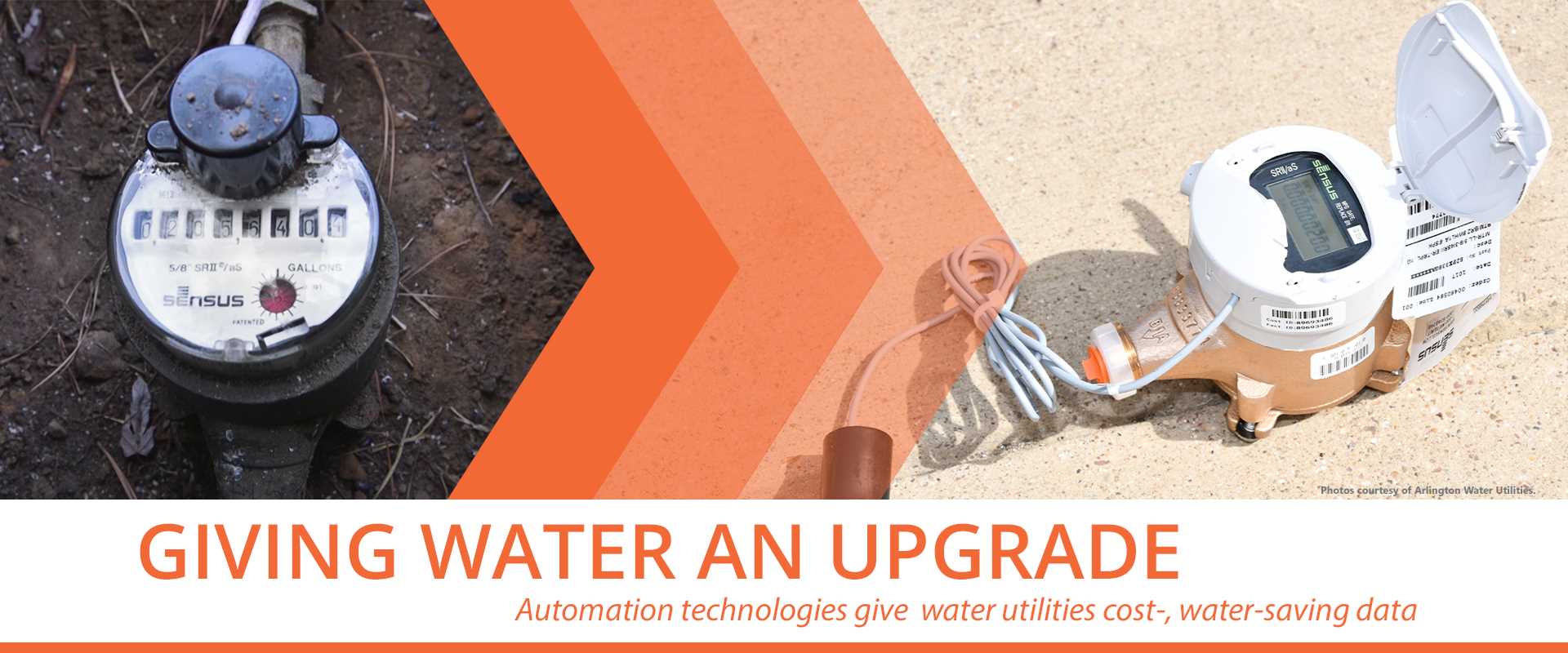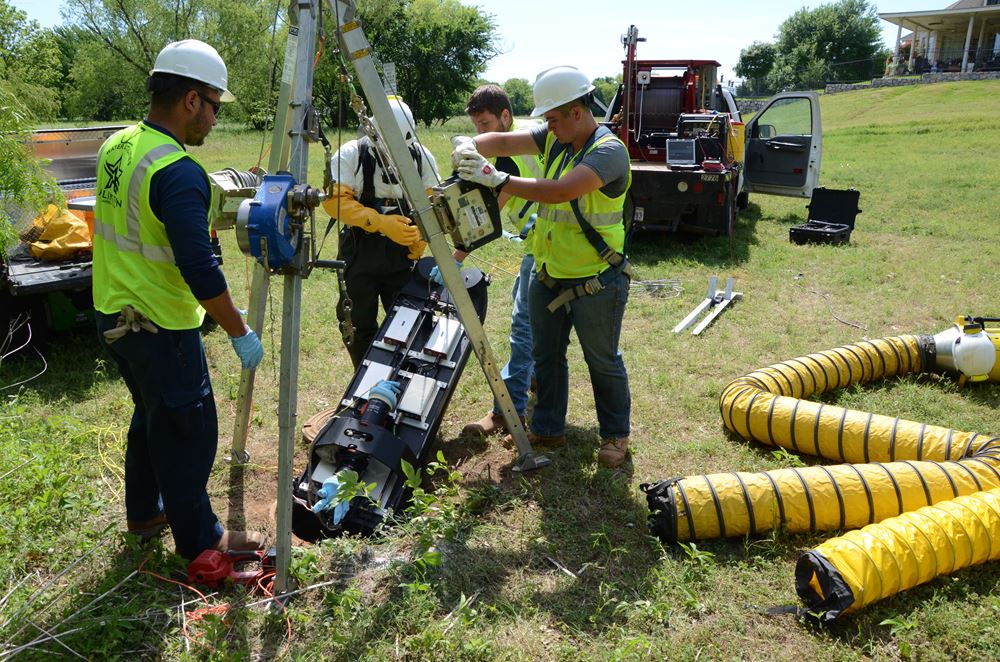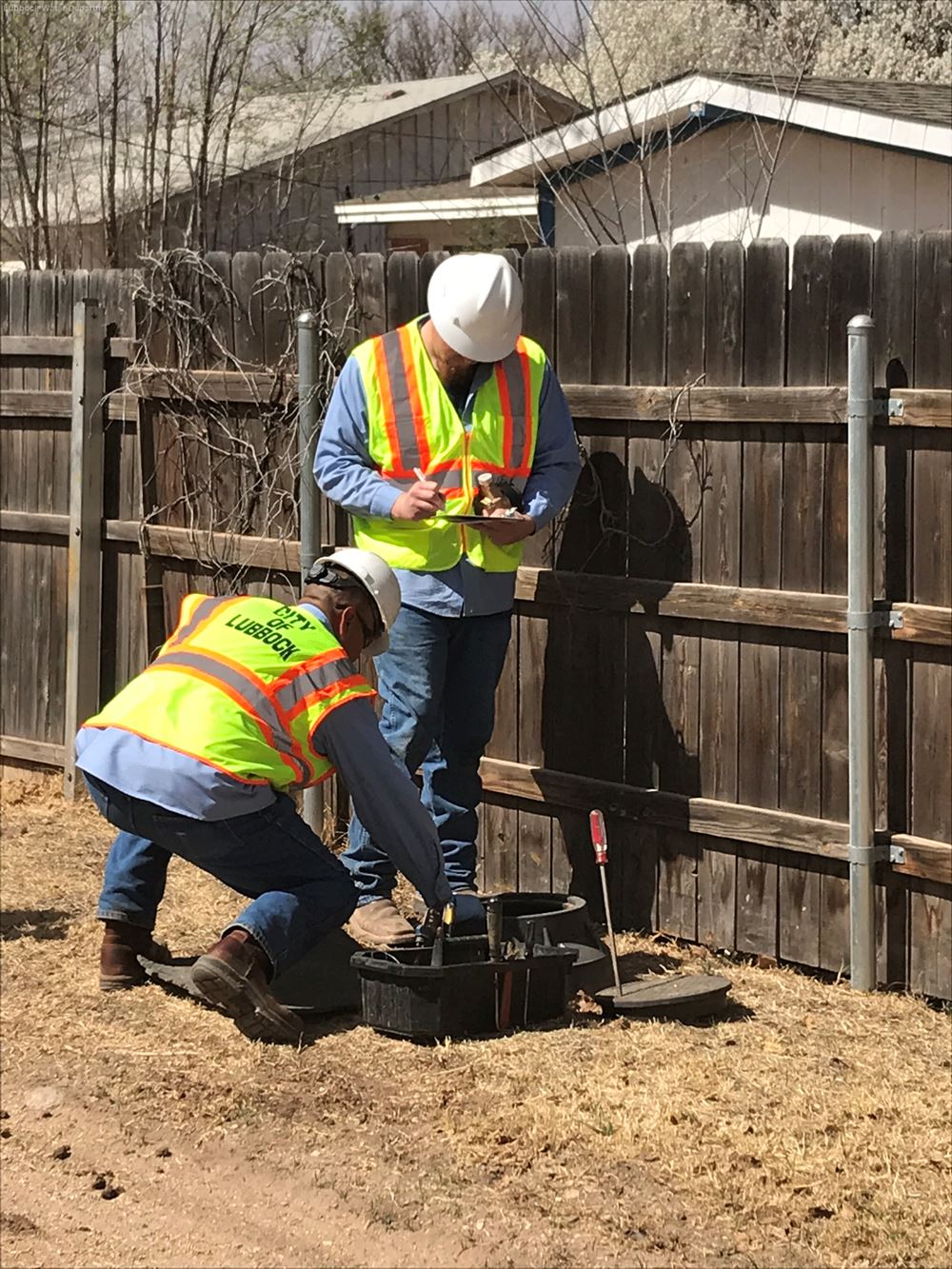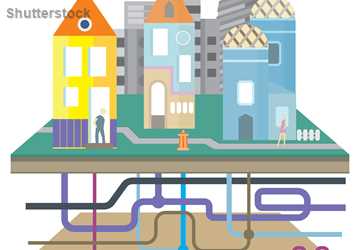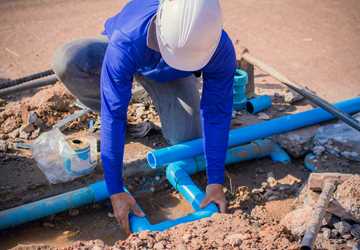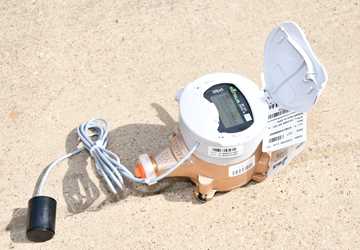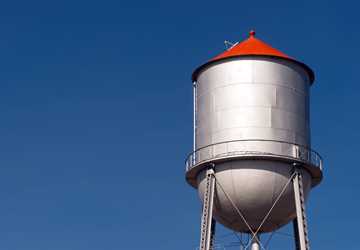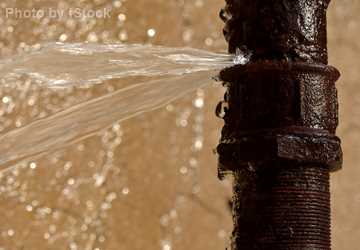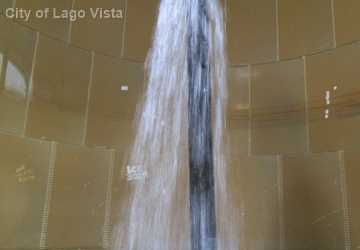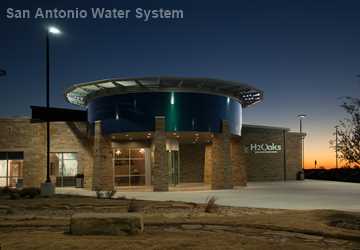Do you live in a smart city?
Smart cities use different types of electronic sensors and technology to collect data, allowing the more efficient management of assets and resources.
One city department in particular can benefit from these efficiency-improving tools: the water department.
Using smart technology such as automated water meters and robots with lasers is making life easier for residents and water utilities, saving them water, money and time.
Digitizing meter readings
In the cities of Lubbock and Arlington, the water utilities are installing advanced metering infrastructure (AMI), replacing meters read manually once a month with digital meters that can record water consumption data as often as every hour or more often in some cases.
Instead of a meter reader visiting each home, the AMI system transmits readings throughout the day over a secure radio network to the water utilities, providing them with data about the customer’s water consumption.
In the cities of Lubbock and Arlington, the water utilities are using smart technology to save them and residents water, money and time.
More information
Want to get txH20 delivered right to your inbox? Click to subscribe.
Customers in cities where AMI has been installed can access digital readings of their meters online to monitor their water use.
In Lubbock, Aubrey Spear, director of water utilities, said the city is scheduled to install 90,000 AMIs over the next year, combining its water and electric utility meters.
“There will be separate data coming in, both from the customers’ electric meter and from the water meter,” he said.
With AMI, Spear said there will be a data point for every hour of every day, instead of one data point every 30 days, as with the manually read meters. “You’ve got 24 data points per day, and you’re talking about a lot more information that we will be able to use to help our customers,” he said.
Because manual meters are only read once a month, Spear said customers occasionally complain when their water bill unexpectedly increases — usually the first sign of an unknown leak.
Once the AMI system is installed, Spear said the utility will be able to know if more water is being used than usual and send customers notifications to check their home for leaks. “It should save a lot of money for the customer and water for us,” he said.
Additionally, if customers call with questions about their water bill, the utility can use the water consumption reports, or profiles, to pinpoint issues. The profiles will show patterns in water use that are outside of the recommended water conservation restrictions and allow the utility to make water- and money-saving suggestions.
“I think that profiles will help us with our relationship with the customers so that they are not doubting what is going on with their water bill,” Spear said. “The AMI technology can help us be more proactive with our decisions and have more solid data to make those decisions with.”
Walter “Buzz” Pishkur, director emeritus at Arlington Water Utilities, said Arlington is now in year six of its transition to AMI. “We’re about 65 percent changed out, so we are well on our way to being fully AMI water metering,” he said.
The AMI technology can help us be more proactive with our decisions and have more solid data to make those decisions with.
“We have also implemented new technology in the customer service and field operations departments,” Pishkur said. “All of our crews have handheld devices, and our work orders are now handled digitally, giving us instantaneous access to account information and accelerating service delivery.”
Enhancing water conservation
In some cases, AMI can be combined with other technology, making them more effective together.
Pishkur said combining AMI data with district metering, or the amount of water distributed out into the district, helps locate areas where leaks may be occurring. The hourly AMI readings are compared to the district metering.
“It helps us focus our leak detection personnel on areas that indicate a higher potential for having a leakage, optimizing limited resources,” he said.
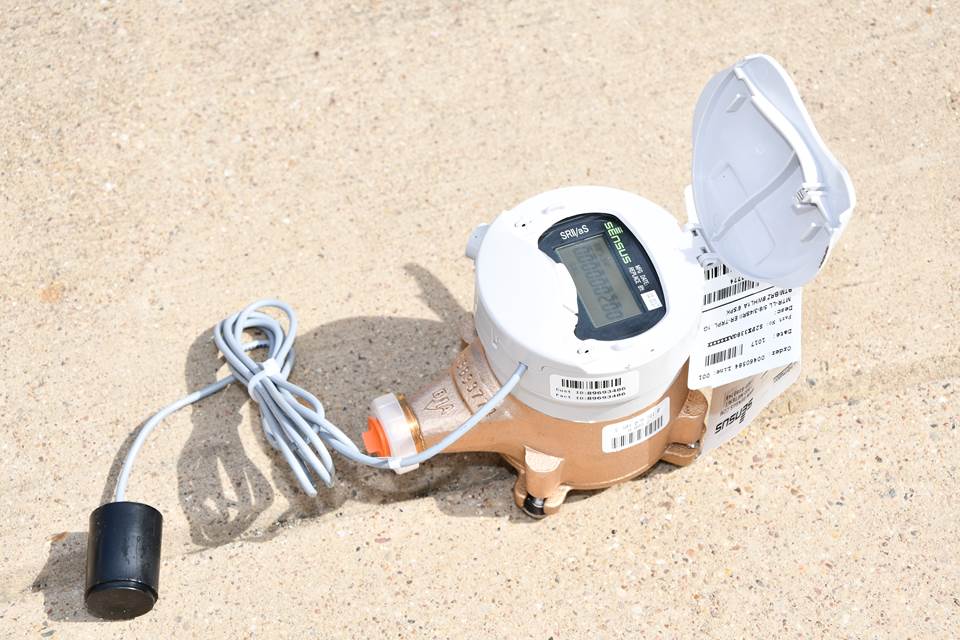
In Lubbock, Spear said the conversion to AMI will also allow other technologies to piggyback onto the data collection devices. Permanent acoustical correlating technology, a type of leak detection system, is placed in water valve boxes or on fire hydrants, sending sound waves through nearby water distribution pipes.
“These devices send data back through the radio collectors in the system, allowing us to detect unusual sound patterns that would indicate a pipeline has a leak even before the pipe bursts,” he said.
If a pipe does burst, Spear said the data would give a more precise leak location, preventing the loss of so much water.
This leak detection equipment can also perform condition assessments on transmission lines that are suspected of developing leaking conditions.
Pishkur said leak detection is just one piece of water conservation in Arlington.
“It’s a combination of AMI metering, full-time leak detection, district metering, focused main replacement and a comprehensive valve maintenance program,” he said.
This combination of efforts leads to a reduction in water loss while avoiding unplanned repairs and reducing service outages for residents.
“In less than five years Arlington has reduced its lost water by nearly 50 percent,” he said. “It’s data, data, data. Our goal of comprehensive water conservation has been achieved by taking accurate data and turning it into useful information.”
Spear said Lubbock has made great strides in its water conservation efforts as well, delaying the need for new water supply projects by at least 10 years.
“We’re like all other cities,” he said. “You’ve got to look out for your new supplies of water, but you also have to take care of your aging infrastructure.”
Managing water utility assets
With aging infrastructure, both Spear and Pishkur said knowing the condition of water lines and valves, or asset management, is extremely important.
At the same time Lubbock’s water department is integrating AMI, Spear said it is adding an asset management system and doing some condition assessments using different technologies.
“We don’t have a cohesive citywide asset management system that will help us manage existing assets and come up with some good proactive replacement programs, so that’s in the process this year,” he said.
“Some of our large transportation or transmission lines, even though they were built back in the 1950s, are still intact and in really good shape,” Spear said. “But there are certain portions that detection technology can say ‘Look, here’s an area of concern,’ and you can go in there and decide how you want to replace or repair that one location rather than taking out miles of pipe.”
Pishkur said pipe assessment and a comprehensive valve maintenance program have many benefits.
“It is estimated that up to 50 percent of all the valves in a water distribution system are either not findable or not operable,” he said. “What that means is whenever you need to have shut-offs, you have to shut off larger areas and it takes longer to achieve a shutdown for repairs. This results in disrupting more residents for a longer amount of time and losing more water due to the time delays.”
Partnering with the University of Texas at Arlington’s Center for Underground Infrastructure Research and Education, Arlington Water Utilities used robot technology to evaluate all the city’s large diameter pipes in its wastewater system.
Traditionally, Pishkur said entire sections of pipe would be replaced when a significant failure or pavement replacement occurred. “We now know that a majority of the pipe being replaced may still have many years of useful life, but we never knew which segments until now,” he said.
“With this robot, not only do we have a picture, but now we know the condition of every segment of large diameter pipe in our system,” Pishkur said. “The robot’s laser can evaluate the pipe structure above the waterline, and with the robot’s sonar capability, we can actually see the pipe condition below the waterline, which we have never been able to do with a camera. We can also see any debris that’s building up there that may be limiting the pipe capacity.”
The robots help not only with preventative maintenance but also with identifying pipe replacement project scopes.
“We had a 66-inch sewer line, which carried approximately 60 percent of all the flow in Arlington, and it failed. So we had a catastrophic event,” Pishkur said. “In the past, we would have made an emergency repair and replaced the entire pipe section. Instead, we put the robot in that pipe and found out that out of 17,000 feet of 66-inch pipe, we only needed to replace about 1,100 feet.”
With this robot, not only do we have a picture, but now we know the condition of every segment of large diameter pipe in our system. The robot’s laser can evaluate the pipe structure above the waterline and below the waterline, which we have never been able to do with a camera.
By knowing which segment of pipe was actually damaged, Pishkur said a potentially $20 million project turned into a $3 million project.
“What we’re finding is that 80 to 90 percent of the pipes that we were replacing didn’t need to be replaced,” Pishkur said. “So now we can do five or six more projects with the same dollars, which has a significant positive impact on our ability to make the piping system more dependable without expending more funds.”
Pishkur said the adoption of this technology has helped the utility spend its dollars in the right place at the right time, accomplishing many more projects and addressing many more issues.
“With the valve maintenance, AMI, district metering, robotic pipe assessment and full-time leak detection, we have achieved tremendous reductions in both operating and spending,” he said.
“Data is influencing everything we are doing. We just had to have the courage to adopt the technology that allows us to be better,” Pishkur said. “You’ve got to be willing to change what you’re doing when you have better data. Technology has and will continue to enhance our ability to provide better service to our residents while improving the skills of our employees.”
Explore this Issue
Authors
As a communications specialist for TWRI, Sarah Dormire works with the institute's communications team leading graphic design projects including TWRI News, flyers, brochures, reports, documents and other educational materials.

